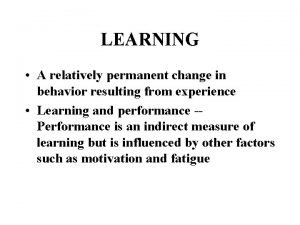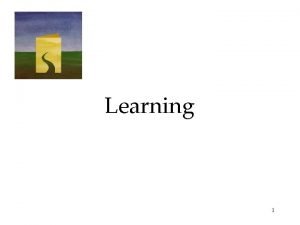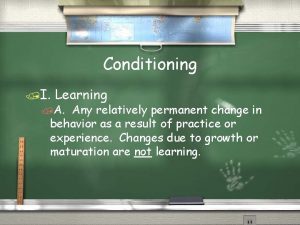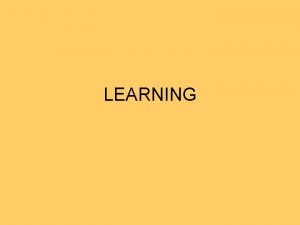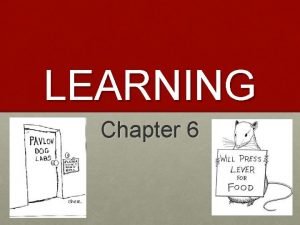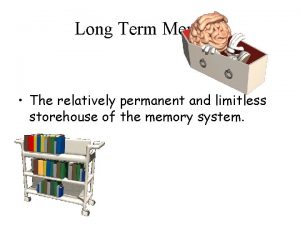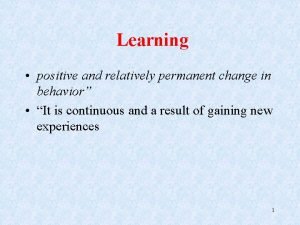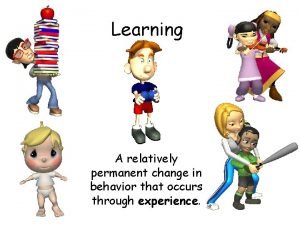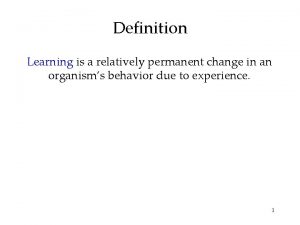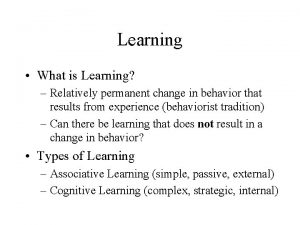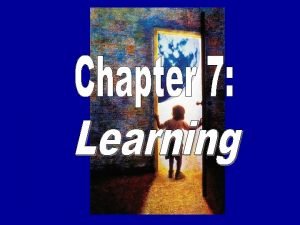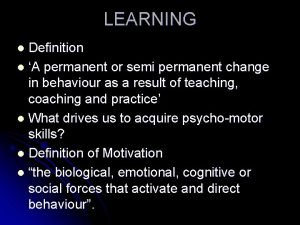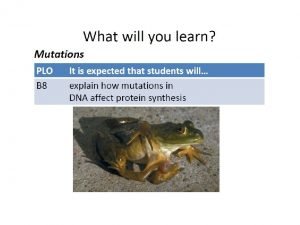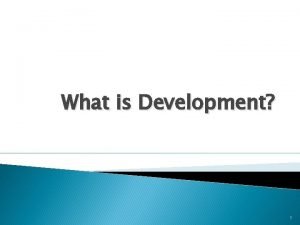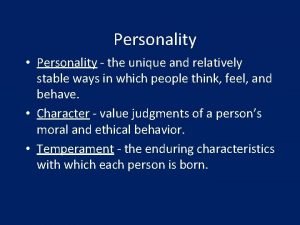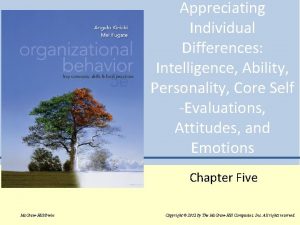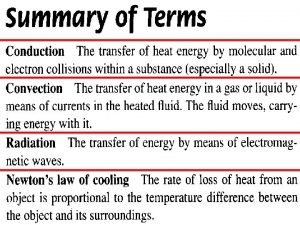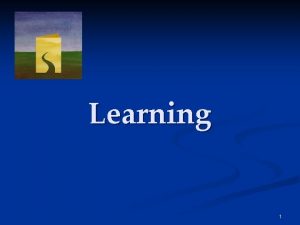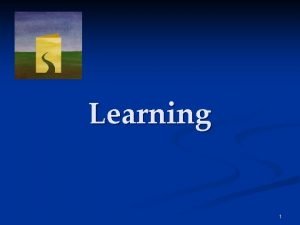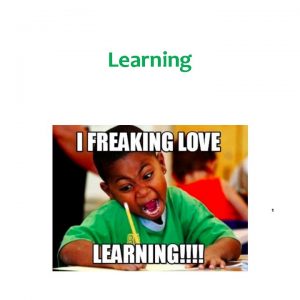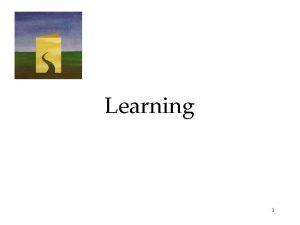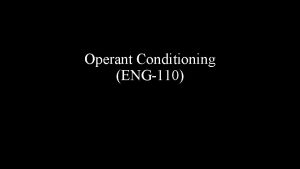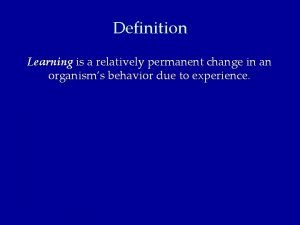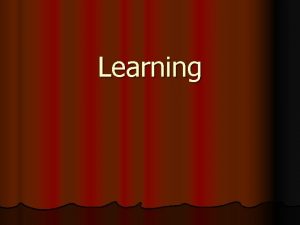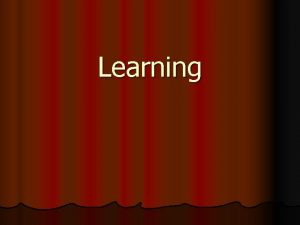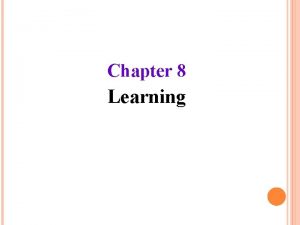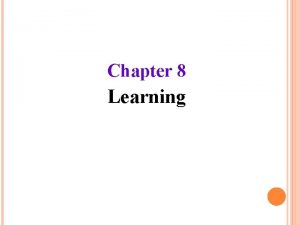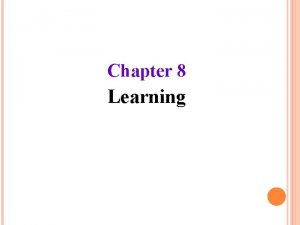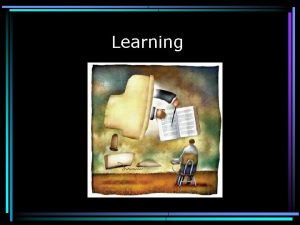Learning ENG110 Definition of Learning A relatively permanent



















- Slides: 19

Learning ENG-110)

Definition of Learning • A relatively permanent change in behavior due to experience. • When we learn, we alter the way we perceive/interpret our environment and therefore the way we interact or behave.

Type of Learning Classical conditioning operant conditioning observational learning

Conditioning • Conditioning involves learning associations between events that occur in an organism’s environment.

Classical conditioning • Is a type of learning in which a neutral stimulus (such as the experimenter’s footsteps) comes to elicit a response after being paired with a stimulus (such as food) that naturally brings about that response.

Experiment • To demonstrate classical conditioning, Pavlov rang a bell and, just a few seconds later, presented the dog with meat. This pairing occurred repeatedly. At first the dog would salivate only when the meat was presented, but soon it began to salivate at the sound of the bell. In fact, even when Pavlov stopped presenting the meat, the dog still salivated after hearing the sound. The dog had been classically conditioned to salivate to the bell.

Neutral stimulus • A stimulus that, before conditioning, does not naturally bring about the response of interest. (e. g. , bell). OR • Stimulus that does not produce relevant response.

Unconditioned Stimulus (UCS) • A stimulus that naturally brings about a particular response without having been learned (e. g. , meat). OR • Stimulus that produce an unconditioned response without previous conditioning.

Unconditioned Response (UCR) • A response that is natural and needs no training (e. g. , salivation at the smell of meat). OR • It is an unlearned response to an unconditioned stimulus without previous conditioning

Conditioned Stimulus (CS) • A once neutral stimulus that has been paired with an unconditioned stimulus to bring about a response formerly caused only by the unconditioned stimulus (e. g. , bell). OR • It is a previously neutral stimulus that has acquired the capacity to produce a conditioned response through the process of conditioning.

Conditioned Response (CR) • A response that, after conditioning, follows a previously neutral stimulus(e. g. , salivation at the ringing of a bell). OR • It is a learned response to a conditioned stimulus that occurs because of previous conditioning.

Examples • NS=Home • UCS=Mother’s death • UCR=Emotions(sadness) • CS=Home • CR=Emotions(sadness)

PROCESS OF CLASSICAL CONDITIONING

Before conditioning • The unconditioned stimulus (UCS) elicits the unconditioned response (UCR), but the neutral stimulus (NS) does not. NS (BELL) NO RESPONSE UCS (MEAT) UCR (SALIVATION)

During Conditioning • The neutral stimulus is paired with the unconditioned stimulus. NS (BELL) PAIRIN G UCS (MEAT) UCR (SALIVATION)

After Conditioning • The neutral stimulus alone elicits the response; the neutral stimulus is now a conditioned stimulus (CS), and the response to it is a conditioned response (CR). CS (BELL) CR (SALIVATION)

Summary of Classical Conditioning • An originally neutral stimulus comes to elicit a response that it did not previously elicit. CS (BELL) CR (SALIVATION) UCS (MEAT) UCR (SALIVATION)

Observational learning • Observational learning occurs when an organism’s responding is influenced by the observation of others, who are called models. OR • Observational learning occurs when a person witnesses the behavior of another and indirectly experiences the consequences of that person’s behavior.

Example • For example, a new employee may observe an experienced employee performing a task and then model his or her own behavior on the observation. • Employees who attend training programs also learn from observation by viewing films, reading manuals and attending lectures.
 Learning is relatively permanent change
Learning is relatively permanent change Meaning of relatively permanent
Meaning of relatively permanent A relatively permanent change in behavior
A relatively permanent change in behavior Any relatively permanent change in behavior
Any relatively permanent change in behavior Learning is a permanent change in behavior
Learning is a permanent change in behavior Is the systematic relatively permanent
Is the systematic relatively permanent The relatively permanent and limitless storehouse
The relatively permanent and limitless storehouse Relatively permanent
Relatively permanent A relatively permanent change of behavior is called
A relatively permanent change of behavior is called Spontaneous recovery
Spontaneous recovery Learning is permanent
Learning is permanent Shaping psychology definition
Shaping psychology definition Cuadro comparativo de e-learning b-learning y m-learning
Cuadro comparativo de e-learning b-learning y m-learning Permanent definition
Permanent definition Permanent change definition
Permanent change definition Development is relatively orderly.
Development is relatively orderly. Definition of remedial teaching
Definition of remedial teaching Source trait example
Source trait example Are complex relatively brief responses
Are complex relatively brief responses Objects that radiate relatively well
Objects that radiate relatively well
